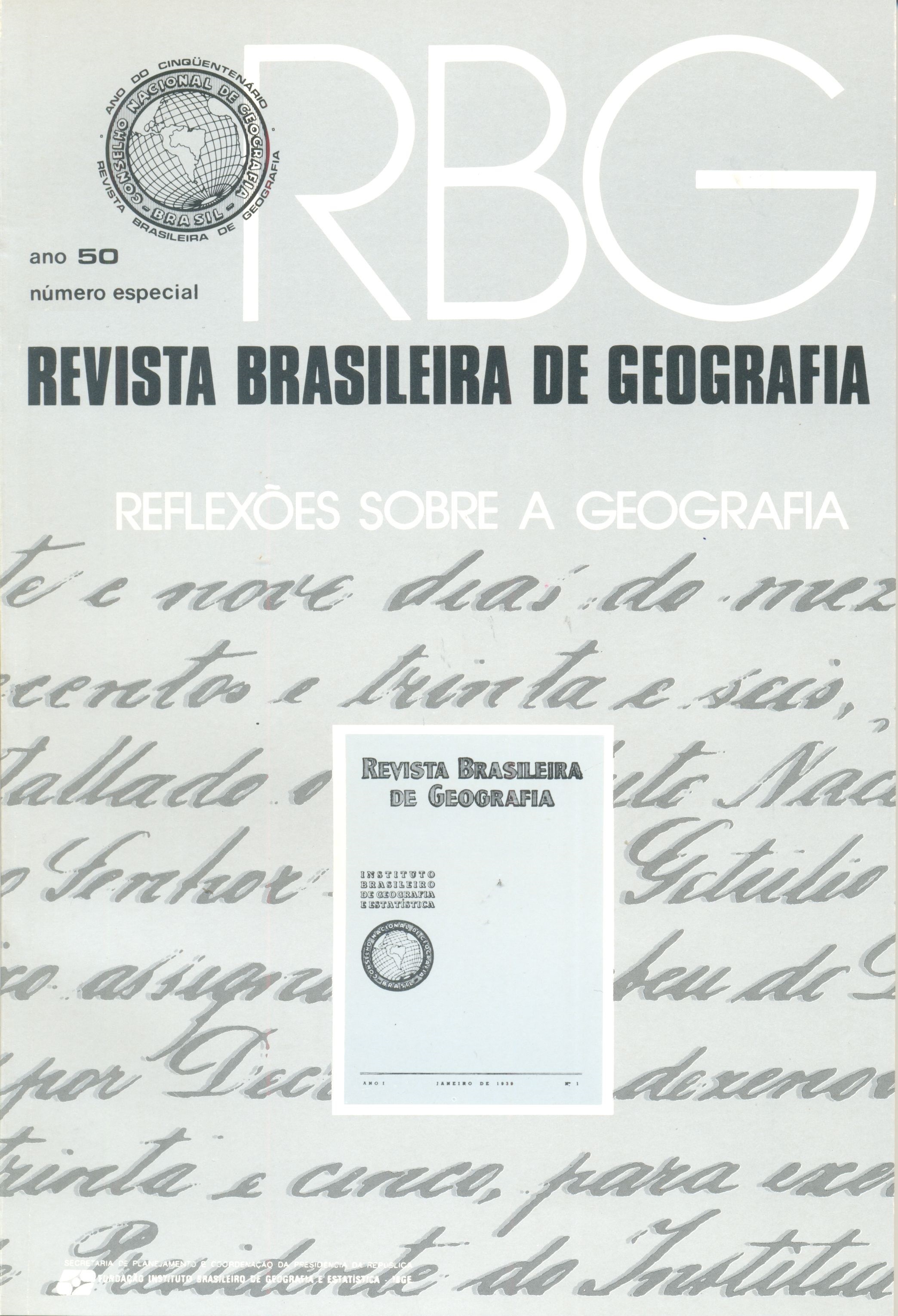Problemas morfológicos do Brasil tropical atlântico
Palavras-chave:
Erosão, Costa, Geomorfologia, Relevo, Climatologia, Erosion, Coast, Geomorphology, Relief, Climatology, Revelo - GeografiaResumo
Abstract:
Having pointed out the appalachian adaptation of drainage patern to the southwest northeast general direction from the folded gneissic. bands which form the bedrock of the coastal ranges (Serra do Mar and Mantiqueira) Mr. de Martonne proceeds to show that the bold upheavals are due to a set of blocks displaced by faults or distortions, oriented like the old folds, and which bear their steepy slope toward the Ocean, whilst on their back slope, gently aggraded towards the interior, landforms of advanced maturity are to be seen within 1500 and 2000 meters. The age of such a surface of Campos (prairies}. as one may so call it, seems difficult to ascertain. It may be thought of as to have been either related to the sandstone at Bauru. the upper elevation being due to tertiary movements, or to derive from another surface of pre-permian erosion from which the slope decreased towards the center of a great convexity.
The fact that there is in the State o! São Paulo an erosion surface fossilized by the continental detrital series of the Santa Catarina system, makes the surface be attributed a pre-permian age. It extends over a band of 10 to 20 km width and at least 200 km long. Its slope is sharp and, if elongated westwards it would passe above the level of the Appalachian crests.
On the other hand, in the algonkian metamorphic folded series of both Mines and São Roque, the differential erosion has left outlying strata of resistant rocks so slightly variable In altitude that the appalachian crests therein should be seen evidences o! another erosion surface which wears down the pre-permian surface and is consequently more recent. On the upper Rio Grande an exceptionally stable platform rises insensibly from 1 000 to 1 200-1 300 meters. It undoubtedly develops a relief of a tertiary or even cretaceous maturity.
This "surface of average crests" may be in effect associated with the front of the rhaetian sandstone, it would wear down the cretaceous and would come to join the tertiary of the Paraná, so as to remain a paleocene age.
Finally, a fourth gently rolling surface as observed in the basins tributaries of the Paraná is to be found again in fullest development around São Paulo and on the head waters of the Paraíba. It keeps itself at 200 or 300 meters approximately above the Paleogene surface and, by reason of the continental pliocene sedimentation of both the Paraíba and the upper Tiété, a neogene age may logically be ascribed to it.
Thus Mr. de Martonne is led to distinguish four erosion surfaces, which suggests long periods of stability.
The major movements date from the neogene where folds deeply affect the ancient bedrock, producing in the domain of Rio Doce and Rio das Velhas an alternation of depression and convexities having an N-S trend, like the folds of the metamorphic series of Minas Gerais and standing out at the rock mass of Bandeira.
To the same movement it should be attributed the proeminence of both Mantiqueira and Serra do Mar whose eastern fronts dissect and result In distortions and horizontal faults. In the quaternary, at the end of these movements, the old bedrock descends towards the Ocean In three shelves the last of which is partially submerged.
The erosion process is intensified which the movements of the neogene soil. Modeled by the affluents of the Paraná, which run westward, the Botucatu cuesta is festooned and resides westwards, while captures rise in the subsequent depression which surrounds 'it on the west. The pre-permian fossil surface ls progressively exhumed towards the west, whilst the erosion there attacks the highest eastern parts.
Lastly. Mr. de Martonne vigorously points out that it is only at the end of the pliocene and chiefly in the Quaternary that direct drainage is arranged towards the Ocean, and this explains why "the great abrupt of Mantiqueira remains intact"; "the capture of the old eastern branches of the upper Tiété (Paraitinga and Paraíbuna) by the Paraíba is the most spectacular advantage obtained".






